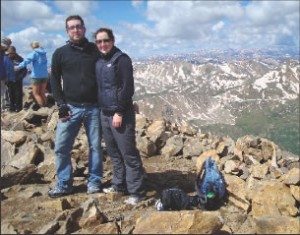(Tips for high-altitude gardeners)
by Suzanne Ward
By this time of year you will have been harvesting your garden produce throughout the summer and hopefully, not too soon nor too late. Harvest timing is learned by experience. It is determined by what tastes best to you. Sample your vegetable produce at various stages of ripeness and you will learn the right harvest time for each vegetable to suit your tastes. Here are some general harvest rules.
Greens should be harvested while still young and not too mature. The center leaves are the tastiest. Greens loss their appeal and become bitter after they have flowered. Spinach is best eaten before it has bolted (This is best achieved by succession plantings.) Plant every few weeks in early summer and again in the fall.
Asparagus should be eaten while young – before the tops have spread. Four to six inches is the right height. The tops should be tight. Also, asparagus takes about three years to become edible.
Peas are great raw in salads while they are young and tender. Wait too long and they become tough. The seedpods need to be filled out, but not too big.
The longer you wait to harvest your beans, the tougher they become. Pick them often and they will continue to produce. I made dilled beans last season with beans that were too mature and they were tough and stringy.
Do not allow root crops such as beets, radishes, turnips or carrots to reach their largest size or they will become tough and woody. They are best harvested while small.
Cabbage will crack if left in the garden too long and will begin to lose its flavor. Harvest them when solid but not too large.
It is tempting to not wait for your tomatoes to become entirely red and plump. However, if you are patient, you will be rewarded with the “vine ripened” tomato taste we all love. Harvest when firm; do not wait until they are soft.
Potatoes can be harvested when the tubers are large enough to eat. When the vines die the tubers stop growing, so they can be harvested as you wish. For winter storage, let the tubers grow until the vines die. The skins on the potatoes will then be thicker.
Summer squash is best harvested while immature. The skins are still soft, and inside, the seeds have not matured. We have all seen giant zucchinis, however they are not the tastiest to eat.
Winter squash and pumpkins should be left to mature on the vine and can even be harvested after a light frost. Cut them off the vine with a stem attached, though, before the first heavy frost.
Wait too long to harvest broccoli and you will have beautiful flowers, but not edible vegetables. Cut the main head and it will produce side shoots. Cauliflower and brussels sprouts are also harvested while young.
My father always said to harvest your sweet corn, run to the kitchen where the water is already boiling, and put them into the pot. Corn is best while still in the milk stage but not too doughy.
Cucumbers lighten when too mature, so look for darker green and slender ones. Wait too long and they become yellow and bitter. Harvest cucumbers often.
Peppers, both green and red, need to reach full maturity. Red peppers should be uniformly red. Parsnips are harvested after the first good frost.
Onions to be eaten fresh should be about one inch in size. For storage, wait for the tops to shrivel and fall over. Harvest before the frost.
On the whole, most produce is tastiest before reaching full maturity. Harvest before bolting, blossoming or going to seed. The exceptions are peppers and tomatoes, winter squash and pumpkins. Others, such as onions and potatoes, depend on your plans to eat now or store for later.
Experience will tell you when it is the right time to harvest your produce, an experience gained by tasting. It’s not a bad way to learn.
Enjoy your garden this season. Enjoy your harvest. Enjoy your tasting.
?
Suzanne Ward lives in Salida.? When she is not gardening she is involved in sustainability projects.

